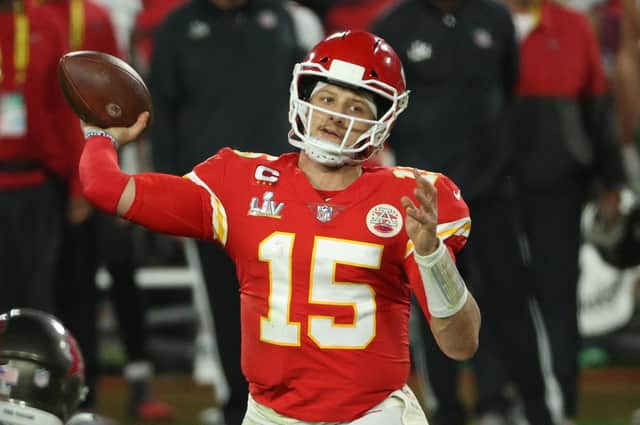Here’s how to avoid the NFL salary cap ‘bloodbath’


In just eight days, the new NFL season starts, the equivalent of the summer transfer window opening in European football, and that’s when trades from the last few weeks will be completed, but moreover, that’s when teams have to have their ducks in a row for next season.
I used the term ducks, but bucks would be more accurate as this is the week when head coaches, general managers and accountants spend long hours trying to figure out the science of salary caps.
Advertisement
Hide AdAdvertisement
Hide AdA salary cap is something that the league agrees in order to keep things competitive, avoiding the same two or three teams monopolising the silverware, something maybe Scottish football could benefit from. Still, I’ll save that for another day.
Another side effect of a salary cap is it stops the over-inflated increase in player and coach salaries while also making sure that the team owners spend a minimum amount, so they aren’t just hoarding all the riches themselves.
This year offers a different proposition to most.
Unlike some sports, the NFL managed to complete a full season without too much disruption; sorry Steelers fans, you got a raw deal.
Of course, it came at a cost.
With no ticket sales, limited merchandise, and no revenue coming in from the over-inflated concessions stands, NFL organisations have felt the impact of the global pandemic.
The results of those hits will be the reduction, or at very least maintaining of the current $198 million salary cap. Good, right? All the teams were under that last season, they had to be, so they could keep the players they have and field teams.
But it’s not that simple.
Players in the NFL have escalating contracts, maybe a first-year hit of $5m, but that could grow to a fourth-year $16m.
A look at Patrick Mahomes’ newest contract has his cap hit increase from $5m to $24.8m as his new contract starts. Mahomes’ salary then jumps to $31m and $42m in the following years. All teams work on this basis - after all, the cap has increased every year since its inception in 1994.
This planning didn’t account for the current global situation and has put teams in a predicament. There are currently eight teams over the salary cap before any potential cut and many more sitting on the precipice.
Advertisement
Hide AdAdvertisement
Hide AdTeams are already working feverishly to restructure contracts of stars where they push money and bonuses later in contracts, although this simply shuffles the problems to next year’s spreadsheet.
So the next option is to cut players who aren’t as important or aren’t willing to restructure.
This perfect storm of sorts has some coaches describing the coming week as a “massacre” while other analysts are using the term “blood bath” to describe the number of players expected to be handed their notice.
There will, of course, be repercussions. Many of those players will find spots on other teams, but due to the tight fiscal situation they may be on smaller or shorter-term contracts, making them expendable all over again.
But, here’s the real kicker. Does the NFL really need to cut the cap at all? Couldn’t they at least offer a similar increment to the previous five years of $10m?
The short answer is yes, they could. The only NFL team that gives us a real insight is the Green Bay Packers, as they are the only publicly-owned franchise. In 2018 the Packers, a non-profit organisation by the way, made $34.1m.
In 2019 they stated to shareholders that national revenue was $274m and “more than covered player expenses”, which sat at $242m.
Call me a cynic, but those numbers show that this league is sustainable and can afford another increase, even if it hits the pocket of the billionaires outside of Green Bay who own these corporations.
Advertisement
Hide AdAdvertisement
Hide AdBecause at the end of the day, these players getting cut are risking their long term health for these pay cheques, so at least let them earn what they are worth.
A message from the Editor:
Get a year of unlimited access to all of The Scotsman's sport coverage without the need for a full subscription. Expert analysis of the biggest games, exclusive interviews, live blogs, transfer news and 70 per cent fewer ads on Scotsman.com - all for less than £1 a week. Subscribe to us today
Comments
Want to join the conversation? Please or to comment on this article.